A Non-Mechanic’s Guide: What to Check When Buying a Used Car
Master the art of buying used cars: Avoid issues, spot red flags, and make informed decisions. Your roadmap to a worry-free ride!
Introduction: no tools required
Back when I embarked on the journey to buy my very first car, I was armed with not much more than excitement and a sense of trepidation. At this crucial juncture, my brother-in-law, a seasoned car enthusiast, bestowed upon me a wealth of wisdom - seven indispensable checkpoints to adhere to when considering a used car purchase. Little did I know, these pearls of automotive insight would serve as my compass, guiding me away from potential troubles and toward a decision I could stand confidently behind. No tools are needed for these checks, and keep in mind that this isn’t an exhaustive list, just some checks an average driver can do.

Now, as I reminisce about that pivotal moment, I feel compelled to share these invaluable tips with you. Regardless of whether you’re navigating the labyrinth of used car buying for the first time, much like my past self, or if you seek a trustworthy blueprint for your endeavour, these well-honed steps are designed to be your safeguard against the pitfalls of purchasing a vehicle with lurking mechanical woes. Armed with this knowledge, you’ll be well-prepared to sidestep potential hazards, making an informed choice that aligns with your needs and desires. So, let’s delve into these actionable checkpoints that not only rescue non-mechanical individuals like me but also empower us to confidently approach the prospect of buying a used car.
1. Transmission Fluid: The First Glance
As you embark on your used car assessment, begin with a pivotal step - the transmission fluid check. Right off the bat, before you even turn the key, pop the hood, and locate the transmission dipstick. The handle of the dipstick should be a bright colour like yellow, orange, or red and have some indicator such as the word “Transmission” or a gear. The dipstick is typically located at the front of the engine compartment, but sometimes it can be in the back. This simple act of checking the fluid can unveil a treasure trove of insights. Your mission: ensure the transmission fluid adorning the dipstick is a vibrant shade of red, like cherry syrup, with no hint of brown in sight.

Why does this colour discrepancy matter so much? Well, it’s a telltale sign of the transmission’s health. Brown fluid is more than just a cosmetic concern; it’s an indication that the transmission fluid has been subjected to severe heat, often a result of aggressive driving or neglectful maintenance. This brown hue signifies burnt transmission fluid - a symptom that should have you raising your guard. A transmission on the brink of failure due to excessive strain is certainly not a vehicle you want to inherit. So, remember, when it comes to transmission fluid, brown is a red flag that’s impossible to ignore.
2. Engine Oil: The Telltale Dipstick
Once you’ve given the transmission fluid its due diligence, direct your attention to another critical component - the engine oil. A quick and informative glance at the oil dipstick can reveal a lot about the health of the vehicle’s powerplant.
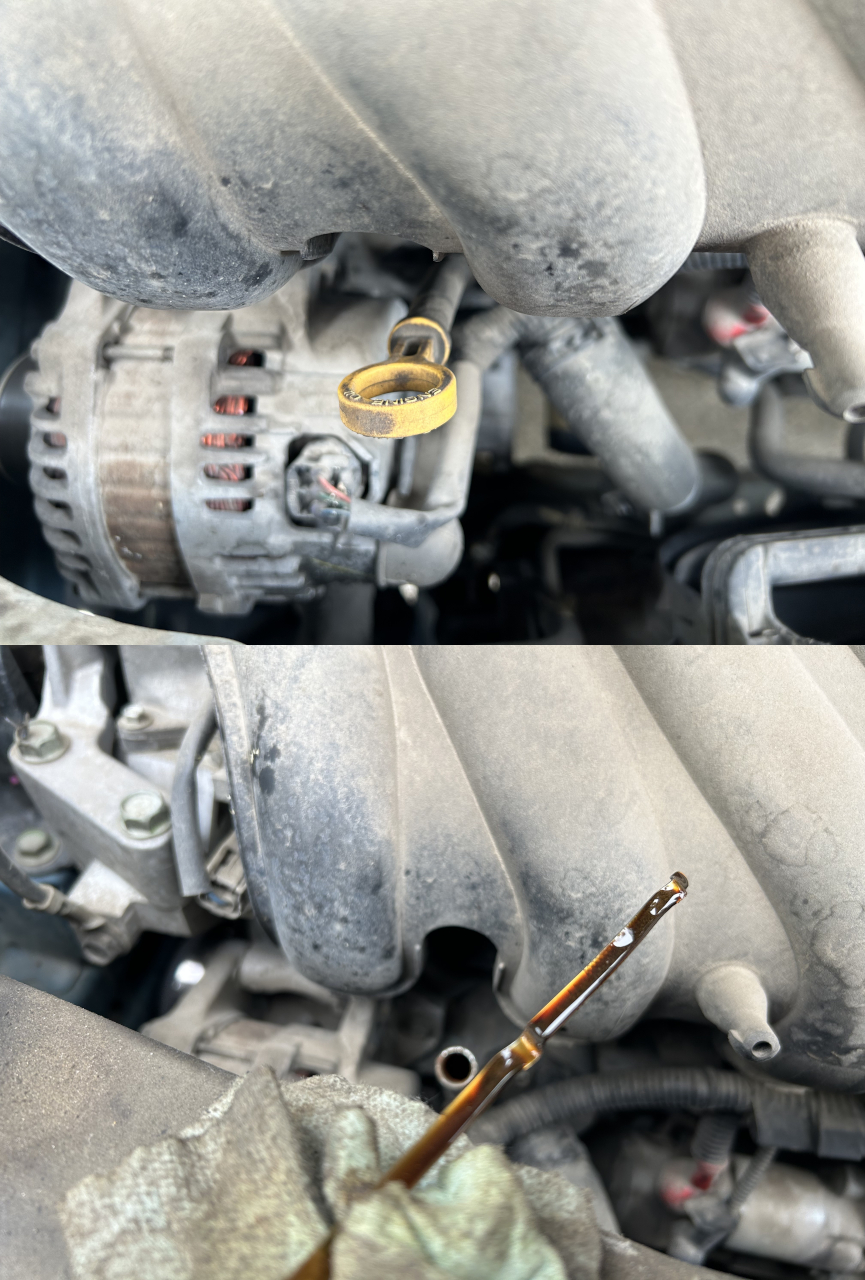
Here’s the protocol: before you even start the engine, extract the dipstick and observe the oil clinging to it. The dipstick should look similar to the transmission dipstick but with a different colour, possibly black, and will say “Oil” or have an image of an oil can on the handle. The location of the dipstick is typically in the front of the engine compartment. The oil you’re looking for clinging to the dipstick should present itself as a dark brown shade, free from any visible particulates or debris. This signifies that the engine has been cared for and maintained properly.
However, don’t let your guard down too soon. If you encounter oil that looks exceptionally fresh, sporting an amber or even slightly darker hue, it’s not necessarily a reason to rejoice. While it could suggest a recent oil change, it also raises a caution flag. A seller might use this tactic to mask underlying issues, prompting you to tread carefully.
Beyond colour, the oil’s consistency can also unveil hidden troubles. If you find the oil to be milky or foamy in appearance, it’s an indication that moisture has infiltrated the oil chamber. In some cases, this could be due to condensation, particularly common during the winter months. While a slight presence of milky oil during winter isn’t a catastrophic concern, it should be seen as a yellow caution light, hinting at the possibility of more significant issues down the road.
However, if the milky appearance is pronounced or prevalent regardless of the season, that’s when you should raise your alarms. It might be indicative of a coolant leak, with antifreeze finding its way into the engine oil. This unfortunate scenario should not be ignored, as it signals a severe mechanical problem that could render the vehicle unreliable and costly to repair. In such cases, the prudent choice would be to walk away from the deal altogether.
3. Test Run: Monitoring Engine Health*
Now that you’ve scrutinized the crucial fluids, it’s time to put the engine through a test run - but don’t rev the engine just yet. Before starting, remember to examine the oil cap, checking for any traces of milky or foamy oil that could indicate unwanted moisture. The oil cap is located on the top of the engine and typically says “oil” or has an image of an oil can. Some oil caps will also have the oil viscosity, such as “5W-30,” printed on it.
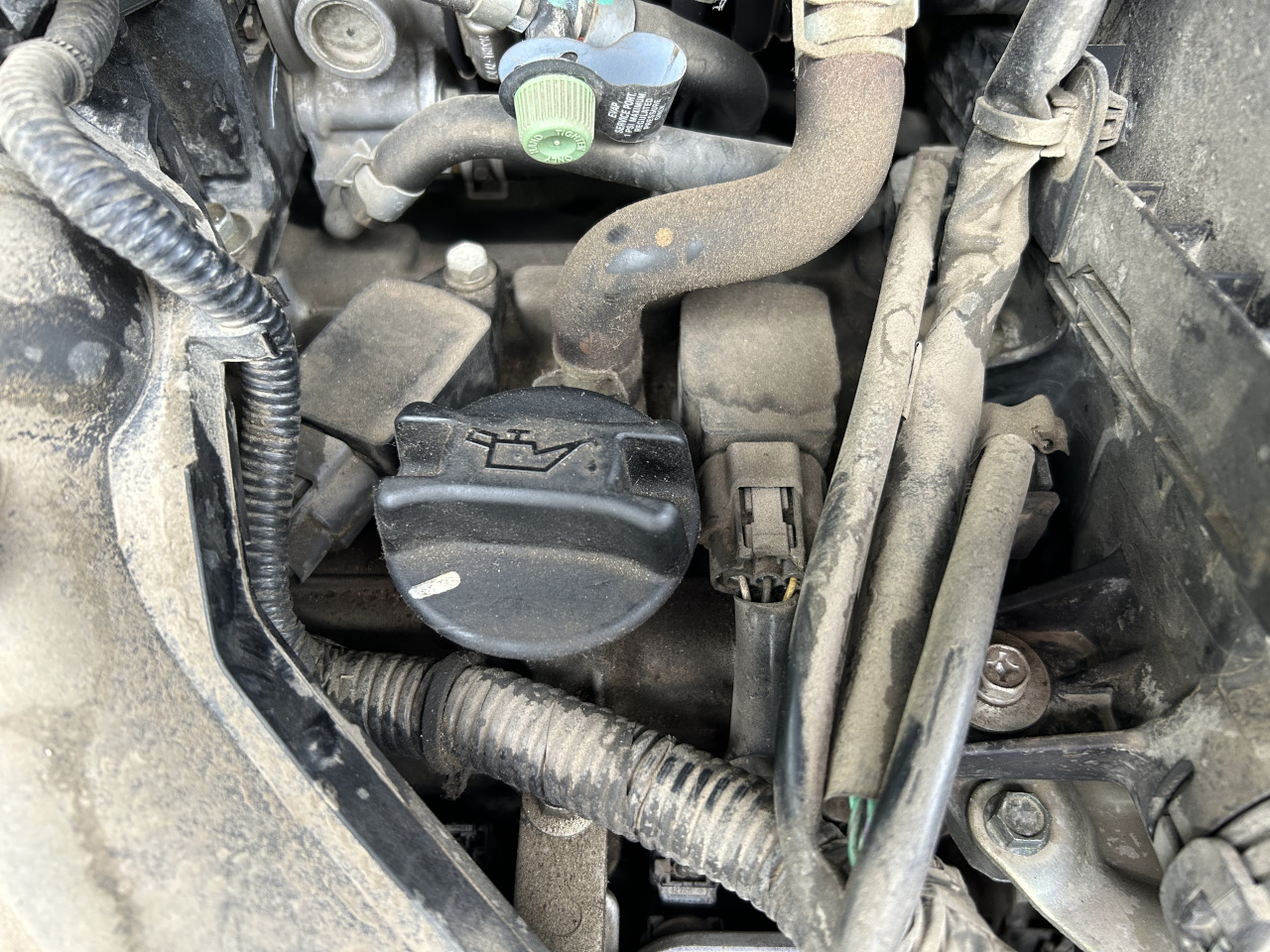
Begin by examining the oil cap. Often, you’ll find a milky residue on the underside of the cap. This can be an indication of water mixing with the oil, which is a major red flag. If you spot this, it’s a clear sign of potential engine trouble.
Now, let’s talk about back pressure. This refers to the pressure that builds up in the engine’s cylinders when the pistons move down. To check for back pressure, while the engine is idling, remove the oil cap. Place your hand or a piece of cardboard over the oil cap opening. If you feel significant pressure pushing against your hand or if the cardboard is lifted, it could be a sign of engine problems.
Pay attention to how long you keep the oil cap off. A slight pressure buildup is normal, but if it’s strong and persistent, there might be issues within the engine.
So, what does all this mean? If there’s water in the oil or excessive back pressure, it could signify issues like a blown head gasket or other internal problems. These are significant concerns that might lead to costly repairs. By conducting this quick test run, you’re gaining valuable insights into the engine’s condition, allowing you to make an informed decision before hitting the road.
4. Front Wheels: Tread Wear and Boots Inspection
Your journey through the realm of used car assessment takes you to the front wheels, where a simple turn to the left and then to the right can reveal a treasure trove of insights. This step is crucial, as it unfurls a canvas that tells tales of the car’s past and gives you a glimpse of its future.
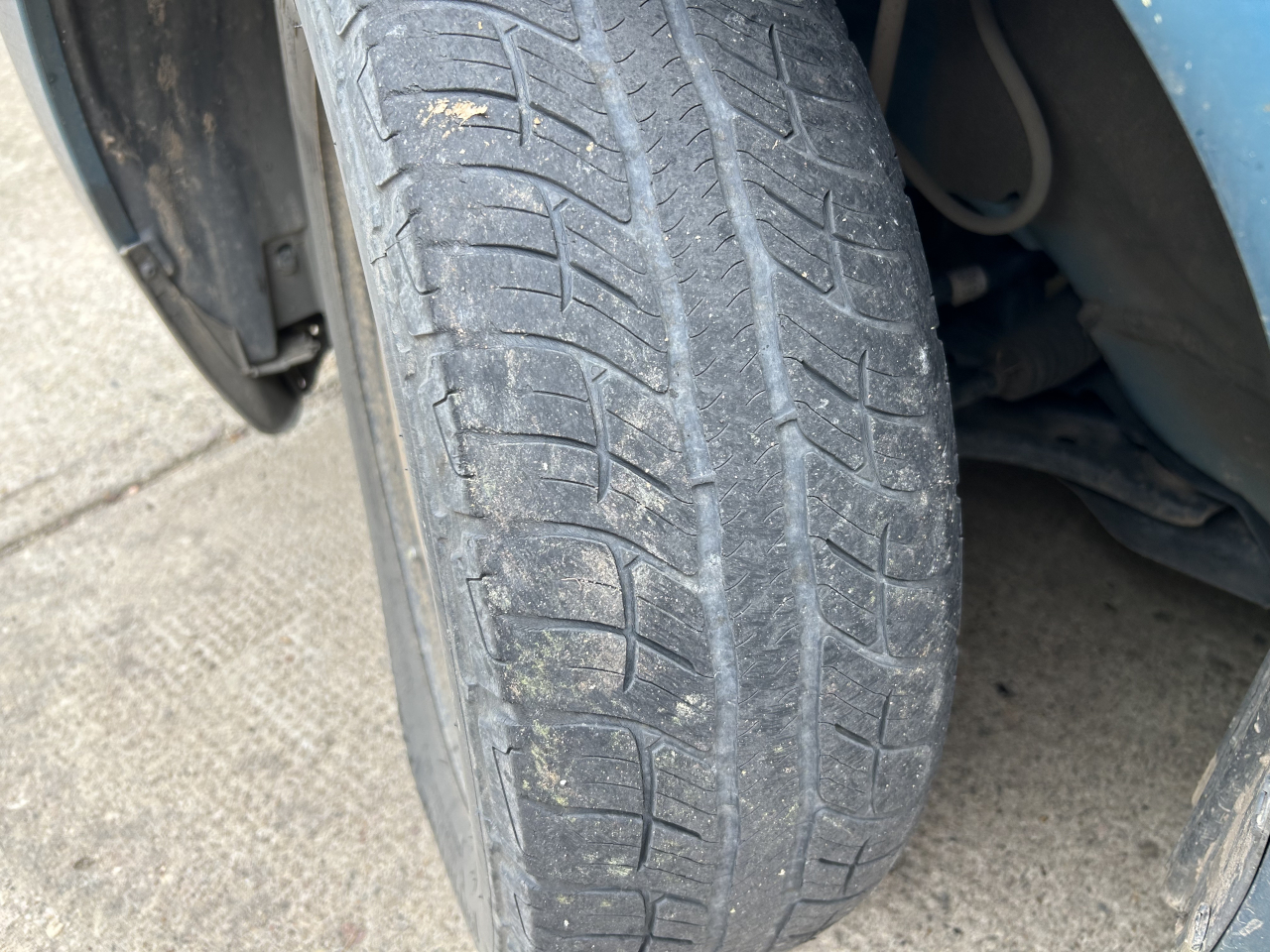
As you swivel the wheels, your gaze should fixate on the tire tread - a telltale map that can reveal the vehicle’s history of alignment and maintenance. Uneven tread wear can be likened to footprints in the sand; they carry a story, and deciphering it can uncover potential issues. There are different types of uneven wear to be mindful of:
-
Uneven Tread Wear: If you notice the tread is worn unevenly across the tire’s surface, it’s a clue that the alignment might be askew, the suspension components aren’t functioning optimally, or there is a wheel balance issue.
-
Wear Only to One Half: Tread wear limited to just one-half of the tire can point to improper inflation or alignment.
-
Wear Down the Middle: If the tread is worn down the center of the tire, it could be a sign of overinflation.
-
Wear on Both Outside Edges: The opposite scenario - tread wear concentrated on the outer edges - might indicate underinflation.
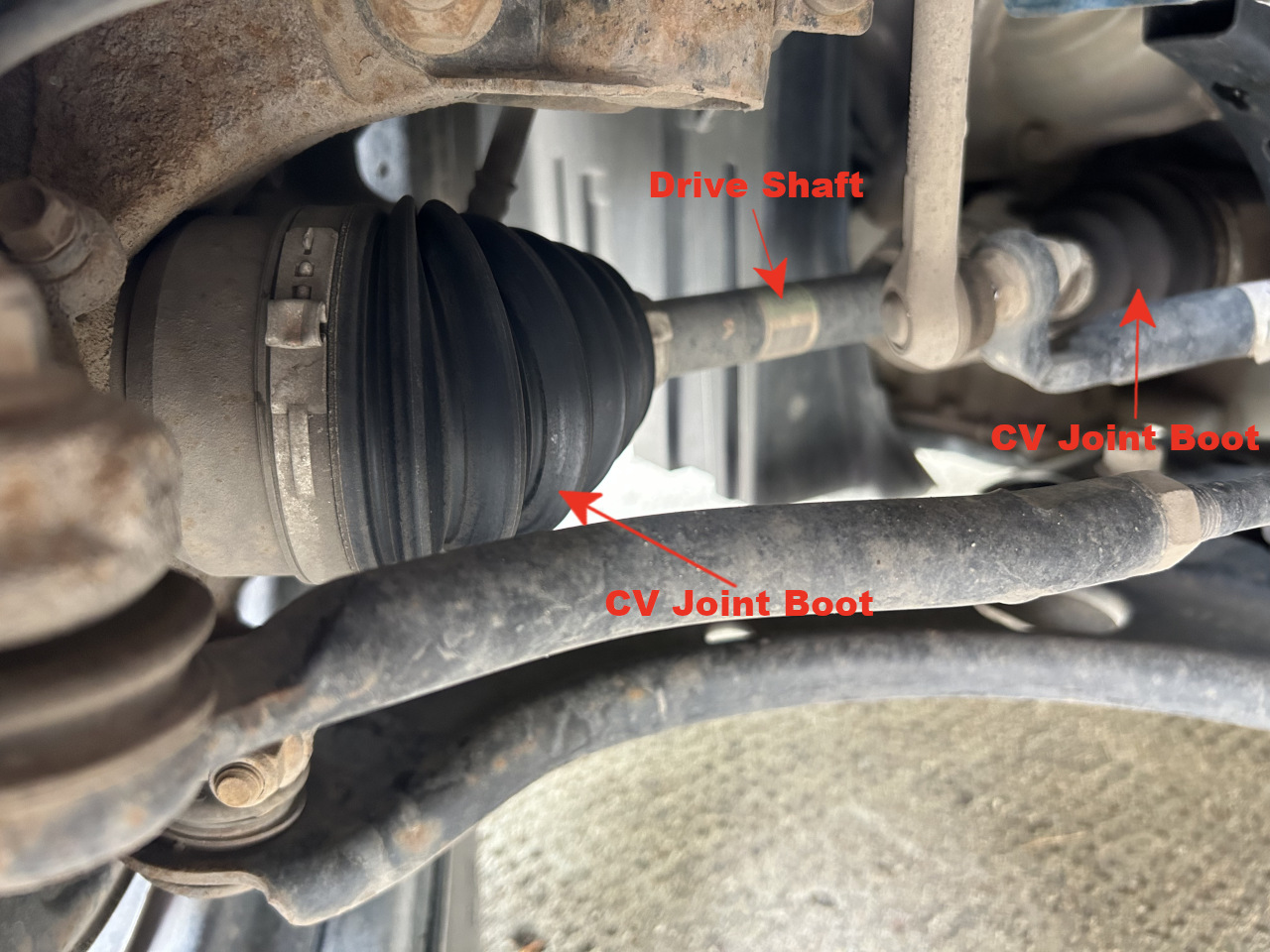
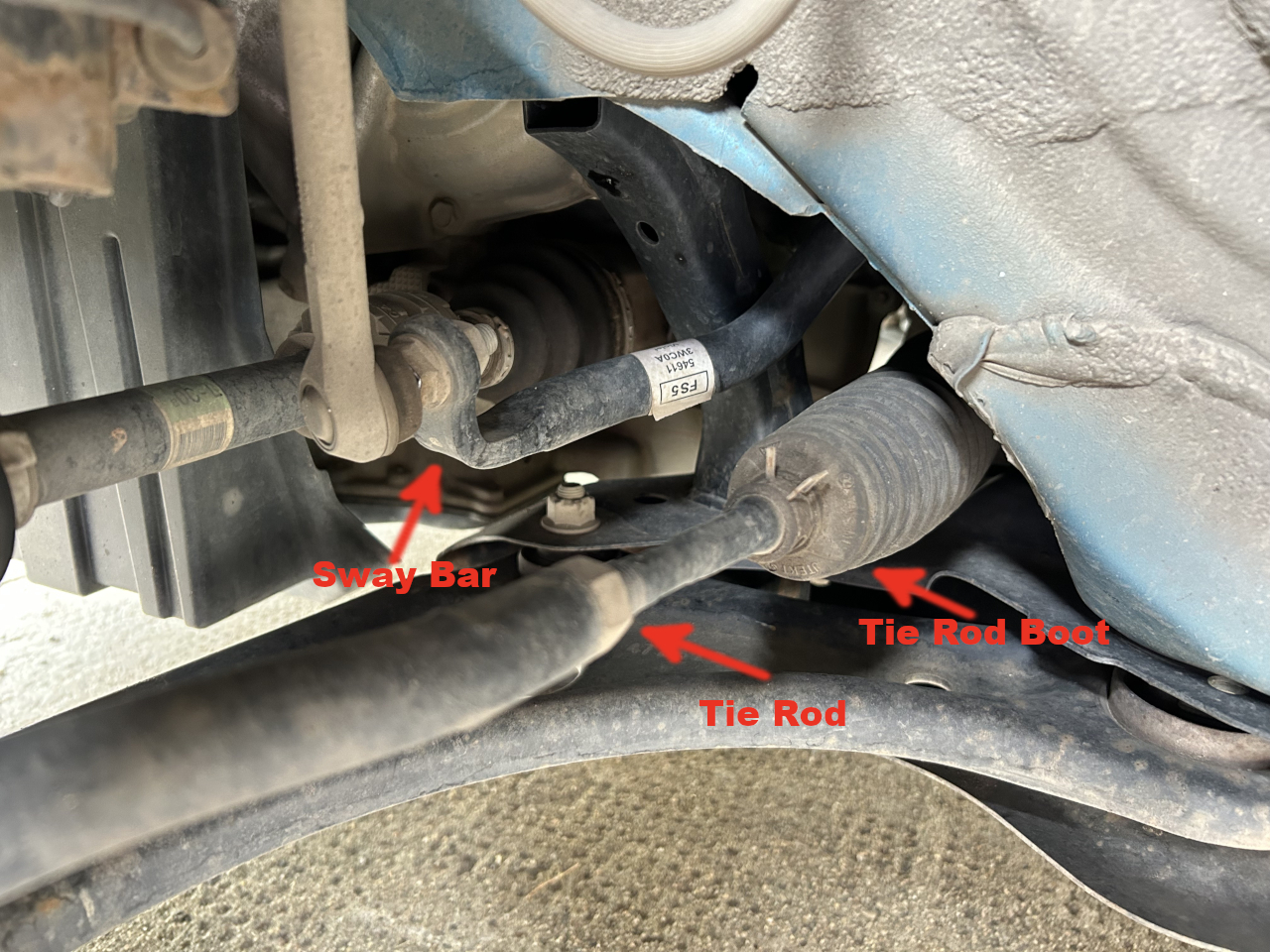
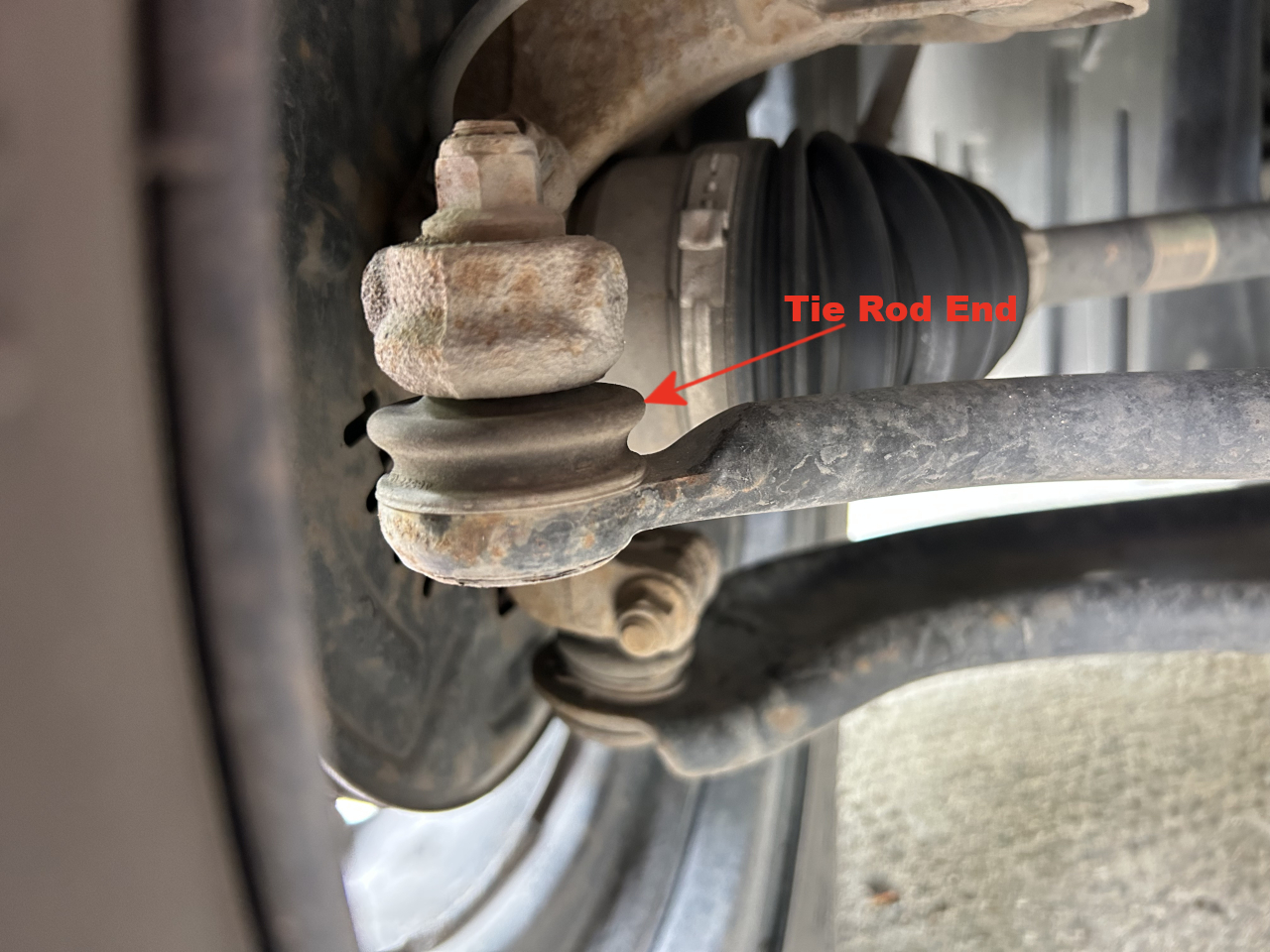
Beyond the tread, shift your attention to the inner wheel well, where you can inspect the boots guarding critical components like the CV joints and steering mechanisms. Inspect the CV joint boots for cracks or holes, as well as the steering (tie rod) boots coming out of the steering box and the tie rod end boots. These rubber protectors shield essential parts from dust, debris, and moisture, ensuring their proper functioning. Any damaged or compromised boots should be viewed as more than a cosmetic issue; they’re a red flag signalling potential future problems.
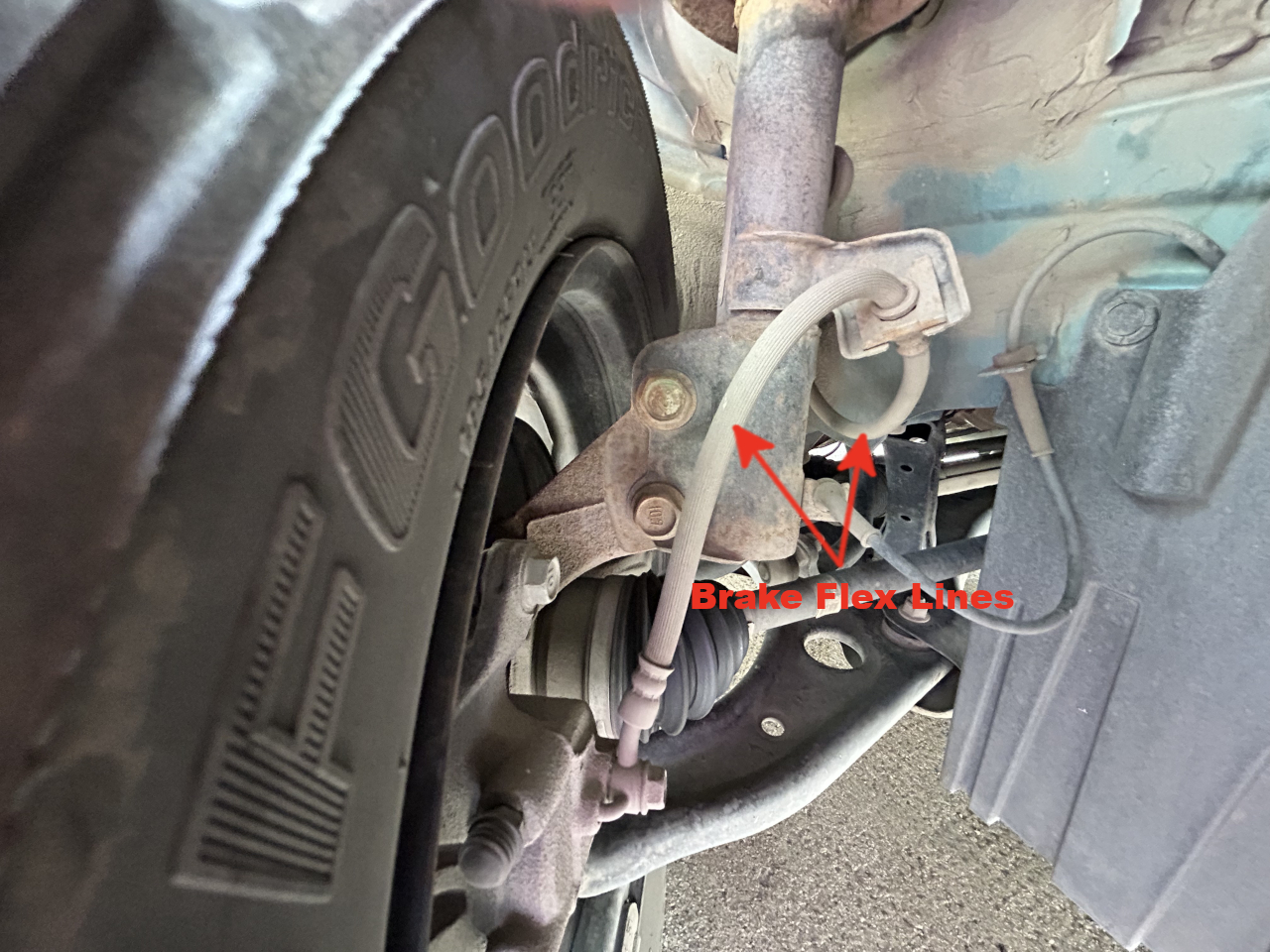
Furthermore, don’t overlook the brake lines during this inspection. Check for any visible cracks, as the integrity of the brake lines is crucial for safe stopping power. This comprehensive examination of the front wheel area provides a holistic view of the vehicle’s mechanical health, empowering you to make an informed decision that aligns with your expectations.
5. Exhaust: A Nose for Trouble
Amidst the array of checks, one might wonder what the exhaust pipe offers. But don’t let its unassuming appearance deceive you - this simple yet insightful test can reveal valuable clues about the car’s engine health.
Begin by lightly placing your hand over the exhaust pipe while the engine hums. Here, you’re playing the role of an astute observer, noting the rhythm of the exhaust’s pressure. What you’re hoping to experience is a steady, even beat - akin to the rhythmic “put, put, put” that echoes from a content engine. This uniform pressure denotes smooth engine operation, indicating that all cylinders are firing harmoniously.
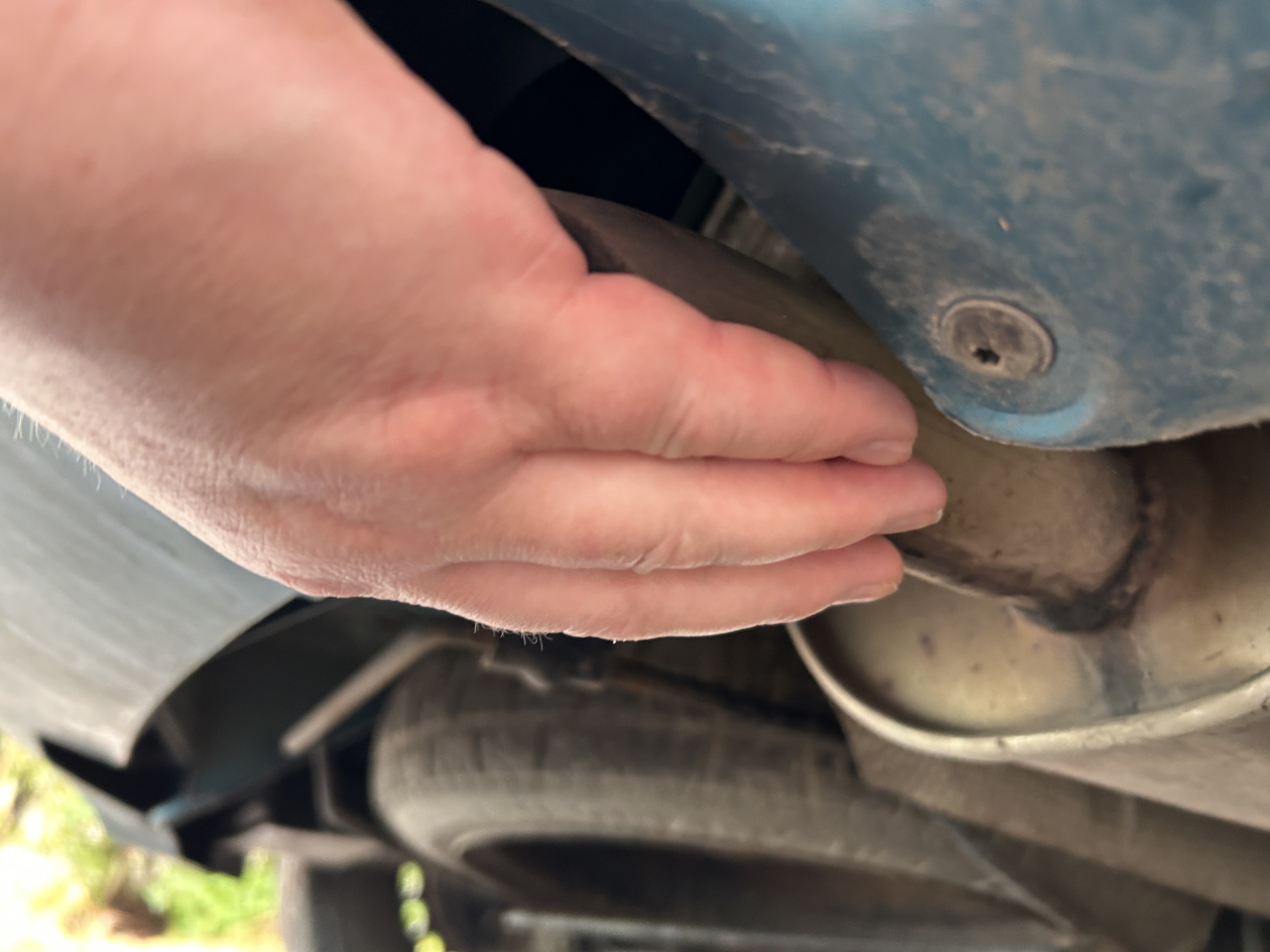
However, if you sense uneven pressure or sporadic bursts that don’t conform to this orchestrated symphony, that’s a definite red flag. It hints at engine misfires or other mechanical irregularities affecting performance and fuel efficiency.
Now, it’s time to engage your olfactory senses. Gently scoop a touch of exhaust towards your nose and take a whiff. The scent you’re searching for isn’t one of sweetness. A typical exhaust odour is far from fragrant, and that’s perfectly normal. However, if you detect a sweetness that’s out of place, it’s not just a curious anomaly; it’s a potentially grim revelation. A sweet aroma in the exhaust could indicate a cracked engine block, resulting in antifreeze seeping into the combustion process. This isn’t a minor glitch; it’s a significant concern that could lead to a cascade of issues and costly repairs.
So, don’t underestimate the exhaust’s contribution to your assessment. These sensory observations might seem minor, but they hold the power to uncover hidden secrets that can guide your decision in the right direction.
6. Test Drive: The Smooth Ride Test
Now, the moment of truth arrives as you slide into the driver’s seat for a test drive, a critical phase in your used car scrutiny. Head to a straight road with minimal traffic, aiming to cruise at a comfortable speed of 50-60 km/h (30-35 m/h). This segment is not just about getting a feel for the road; it’s about unearthing hidden quirks that might evade stationary inspection.

As you navigate the open road, execute a maneuver that might seem unorthodox: loosen your grip on the steering wheel and press the brakes to slow the car quickly. The objective here isn’t just to test your reflexes; it’s to unravel the car’s braking system performance. Pay heed to any subtle or pronounced pulling in the steering - an indicator that the vehicle might not be stopping as it should.
A pull to the right or left during forceful braking is more than just an annoyance; it’s a glaring red flag. It suggests an imbalance in the braking system, which could signify worn brake components, misaligned suspension, or other maintenance woes. If the car displays this behaviour during the test drive, it’s a pivotal moment that could save you from a host of future problems. In such a scenario, it’s wise to consider this warning seriously and think twice about proceeding with the purchase.
While on the test drive, take a moment to listen and feel how the transmission is shifting. If the car hesitates to go from a stop or a slow speed, shakes or shudders when shifting gears or going from a stop, or if the gears shift roughly or with a noticeable impact, these are all signs that the transmission might be on the brink of failure. These warning signs should not be taken lightly, as transmission repairs can be costly and time-consuming.
This test drive isn’t just about the thrill of the road; it’s a methodical examination that empowers you with vital insights into the car’s dynamic behaviour. By adhering to this step, you’re taking another proactive step towards ensuring that your potential vehicle is a smooth ride, not just on paper but also in practice.
7. Automatic Transmission: Stress Test
If your prospective ride boasts an automatic transmission, it’s time to delve into a test that can unveil hidden issues - the automatic transmission stress test. As the car stands still, conduct this assessment to ensure you’re not just acquiring a set of wheels but a worry-free driving experience.

Begin by fully depressing the brake pedal, effectively anchoring the car’s position. With the brake firmly engaged, maneuver the gearshift into drive, then carefully apply a gentle amount of pressure to the gas pedal. As the vehicle responds by slightly lifting itself, keep your ears peeled for any unfamiliar sounds that might emerge from beneath the hood. You’re essentially stressing the transmission to gauge its resilience and integrity.
Ideally, during this stress test, the car should maintain its position with an air of steadfast composure. Any unsettling noises or peculiar movements during this phase should raise alarm bells. These could signal transmission anomalies that might develop into serious problems down the road. In such cases, it’s prudent to consider this a red flag, leading you away from a potential headache-inducing investment.
And don’t forget the reverse gear; perform the same procedure in reverse to ensure uniformity in the transmission’s behaviour. By incorporating this meticulous yet straightforward test into your assessment arsenal, you’re ensuring that you’re not just getting a car with an automatic transmission but one primed for smooth, hassle-free journeys.
Bonus Tips for a Savvy Purchase
As you gear up to finalize your decision, keep these bonus tips in mind. They can be the difference between a smooth journey and a bumpy road ahead.

First, consider the car’s odometer reading. Ideally, aim for vehicles with around 150,000 km (93,000 miles) or less. Why this figure? Well, vehicles tend to have a life expectancy of approximately 300,000 km (185,000 miles). You want a car with longevity. Beyond the 300,000 km point, major mechanical hiccups become increasingly likely. If the car’s mileage is higher, don’t shy away - instead, inquire about the nature of the driving it’s endured. Highway miles are kinder to a car’s moving parts compared to the stop-and-go nature of city driving.
Another crucial tip is to keep an eye on the check engine light. If it’s illuminated, treat it as a cautionary red flag. Fortunately, most parts stores offer a helpful service - using an OBD-II scanner to read the error code behind the check engine light. However, I’d call the parts store to confirm the service in advance. Also, many sellers shouldn’t object to you taking the car for this diagnostic check. However, bear in mind that the code is merely a starting point, not a comprehensive diagnosis of the car’s health. There may still be costly repairs hiding behind the light.
Finally, set your sights on a vehicle that’s less than 12 years old. This is particularly important because most insurance companies stipulate a road-worthy examination by a certified mechanic for cars aged 10-12+ years before providing coverage. Ensuring your potential purchase falls within this age range not only streamlines the insurance process but also enhances your confidence in the car’s reliability.
Armed with these bonus insights, you’re poised to make a purchase that aligns with both your present needs and your future peace of mind. Your journey towards a mechanically sound used car is now fortified with these wise considerations.
My Personal Journey: Dodging a Bullet with a Used Car Purchase
Just like you, I’ve been in your shoes, navigating the enigmatic world of used car purchases. In fact, let me share a personal story that echoes the value of these very tips and how they transformed an uncertain journey into a triumph. So, stick around for a tale that underscores the significance of these principles in my real-life scenario.
When I embarked on the quest for my first car, I was a novice in the world of automobiles. Back then, my brother-in-law shared these invaluable tips with me, and little did I know how much they would come to my rescue. Armed with this newfound knowledge, I ventured into the realm of used car buying, an endeavour that would later save me from a potential disaster.
My very first car was a sleek 1998 black Ford Escort. It served me well, taking me on countless adventures without a hint of trouble. But as time passed, the inevitable upgrade beckoned, leading me to the doors of a small used car dealership nestled within my local industrial park.
There it was, standing proudly - a 2006 deep metallic red Chevy Aveo. Eight years old, with a price tag of $3600. The car was a marvel, boasting features that felt like luxuries to me at the time - heated seats, a sunroof, a top-notch aftermarket stereo, and even a remote start. It seemed like a dream come true.

Yet, as I delved into the inspection process, the veil of allure began to lift. Before even starting the engine, I noticed something disconcerting - the transmission fluid was a not-so-great shade of brown. My heart sank, for I knew this was a red flag, a telltale sign of issues lurking beneath the surface. I brought this concern to the dealer’s attention, who brushed it off with unwavering assurance. According to him, it was expected, and there was absolutely nothing to worry about.
But my brother-in-law’s advice echoed in my mind, and I was not about to be swayed easily. As I turned the wheel, scrutinizing the brake lines and rubber boots, it became apparent that the front tires were in dire need of replacement. The dealer promised new tires by the next day, but even that didn’t entirely quell my concerns.
With determination, I embarked on a test drive. The brakes held their own, and the car’s initial acceleration seemed fine. However, as I continued driving, a shudder reverberated through the vehicle each time it shifted gears. This shudder was a telltale sign - a clear indication that something was amiss within the transmission.
Back at the dealership, I shared my observations with the salesman. Unsurprisingly, he remained steadfast in his dismissal of any issues. His insistence that everything was perfectly fine clashed with my growing apprehension. I refused to be swayed by his reassurances. His claims that the car had been acquired from a reputable source in Calgary were of little consequence to me.
Ultimately, I walked away from the alluring Aveo. It was a difficult decision; one made easier by the knowledge imparted to me years ago. I knew the dealer was concealing the truth, and I wasn’t willing to take the risk. However, I felt a pang of sympathy for the potential buyer who might eventually fall into their trap. Still, this experience taught me a valuable lesson, inspect every used car before purchase.
Thanks to my brother-in-law’s advice, I had sidestepped a potential catastrophe. I realized the significance of being equipped with insights into a car’s mechanical health, even when you’re not mechanically inclined. The knowledge transformed me from a vulnerable car buyer into an empowered one. Remember, each car holds its own story, and with the proper guidance, you can ensure that your tale is one of triumph rather than tribulation.
Conclusion: Your Road to Empowered Choices
As we near the end of this enlightening journey, you now hold a paragon of insights that can transform your used car purchase into a triumph rather than a trial. These invaluable tips, gifted by my astute brother-in-law, have been a guiding light through the labyrinth of car buying, saving me from potential headaches and unexpected financial burdens. They’ve become a trusted toolkit that I’ve wielded time and time again to confidently assess the mechanical condition of used cars, resulting in decisions I’m proud of.

Embracing these principles isn’t just about avoiding lemons; it’s about setting out on your car-buying quest as a non-mechanical buyer, fortified with knowledge and empowerment. The prospect of deciphering a car’s mechanical complexities needn’t be a daunting endeavour. Instead, approach it with newfound confidence, each step aligned with insights that shield you from unpleasant surprises.
In the meantime, remember that the road to a mechanically sound used car begins with these steps - a road that leads to not just a new set of wheels but a voyage backed by the power of informed choice.


Leave a comment